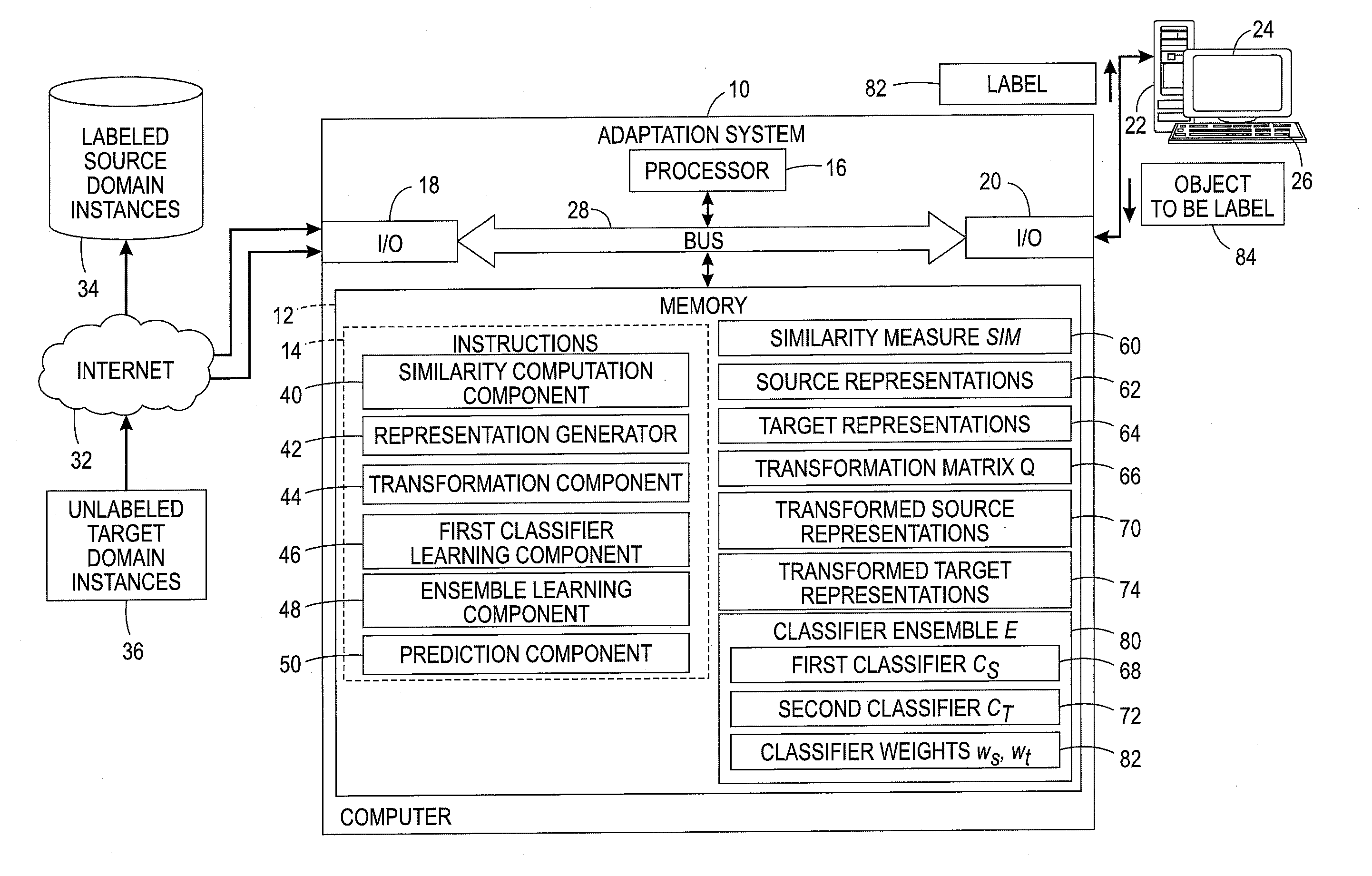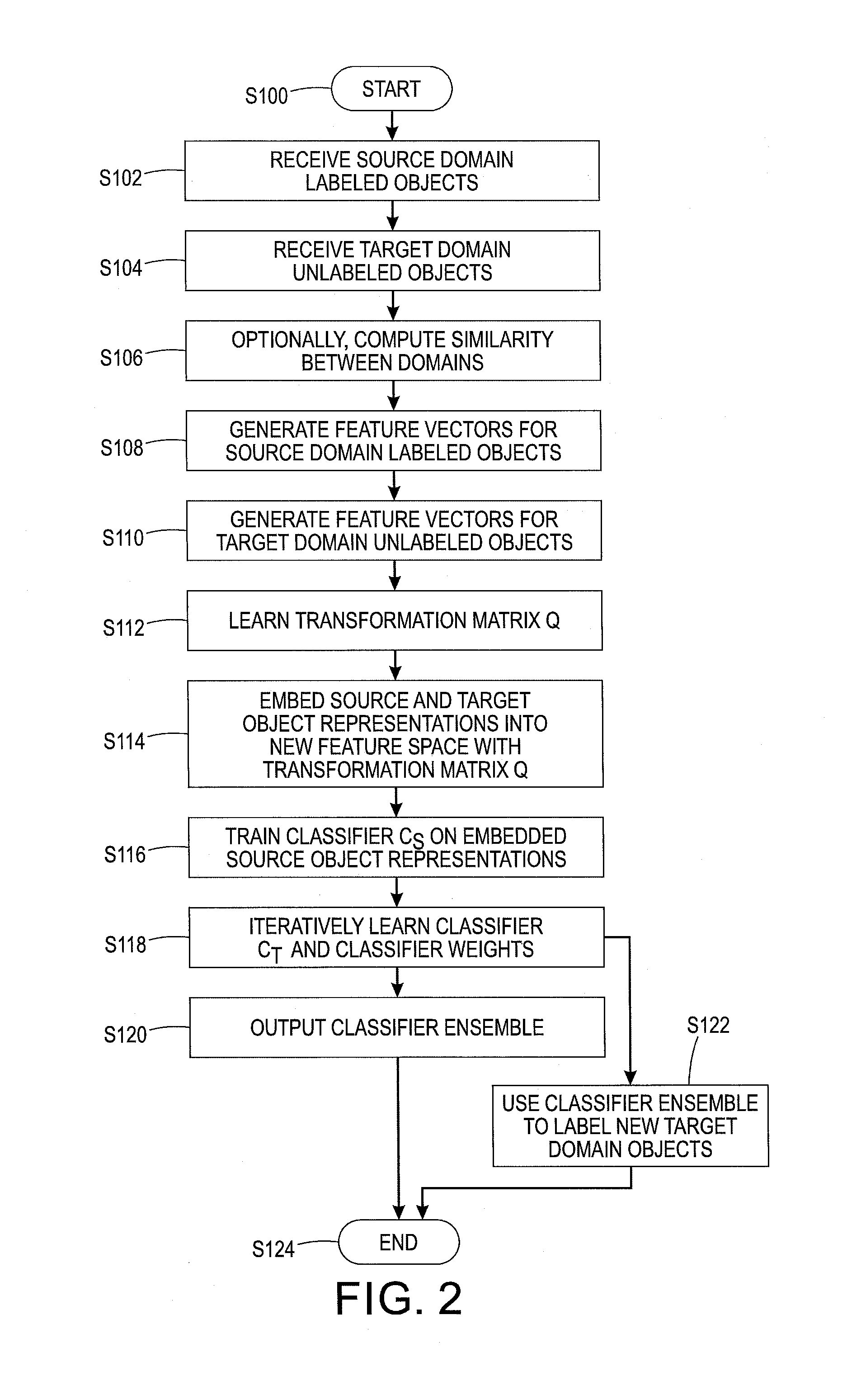Content-aware domain adaptation for cross-domain classification
a content-aware domain and domain technology, applied in the field of classification, can solve the problems of inability to hold true, inability to adapt to the new domain, and inability to meet the needs of users,
- Summary
- Abstract
- Description
- Claims
- Application Information
AI Technical Summary
Benefits of technology
Problems solved by technology
Method used
Image
Examples
examples
[0097]In the following, the exemplary content-aware domain adaptation method is compared to other classification methods in the context of sentiment analysis.
[0098]Sentiment analysis of user-generated data from the web has generated a wide interest from both academia as well as industry. The amount of data available on the web in the form of reviews and short text offers the potential for businesses to analyze public opinion about their products and services and to gain actionable business insights. Customers are able to express their opinions about a wide variety of topics in different domains, such as movies, news articles, finance, telecommunications, healthcare, automobile, as well as other products and services. The exemplary content-aware domain adaptation technique is particularly useful for cross-domain sentiment categorization problems. A two-class sentiment classification problem that aims at classifying text into positive and negative categories is considered.
[0099]To eva...
PUM
 Login to View More
Login to View More Abstract
Description
Claims
Application Information
 Login to View More
Login to View More - R&D
- Intellectual Property
- Life Sciences
- Materials
- Tech Scout
- Unparalleled Data Quality
- Higher Quality Content
- 60% Fewer Hallucinations
Browse by: Latest US Patents, China's latest patents, Technical Efficacy Thesaurus, Application Domain, Technology Topic, Popular Technical Reports.
© 2025 PatSnap. All rights reserved.Legal|Privacy policy|Modern Slavery Act Transparency Statement|Sitemap|About US| Contact US: help@patsnap.com



